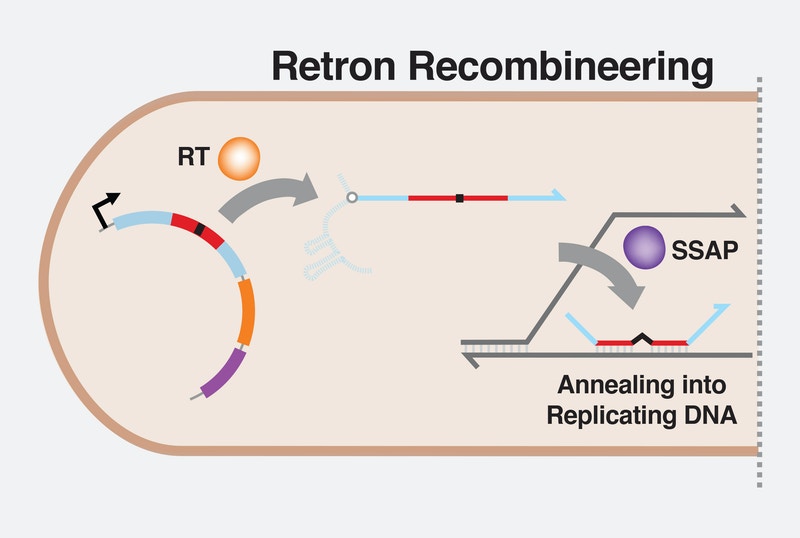A research team at the Harvard Wis Institute has developed a new gene editing tool that can run millions of gene experiments simultaneously. Using a technique called Retron Library Recombineering (RLR) that manipulates a segment of bacterial DNA called retron that produces single-stranded DNA fragments.
When it comes to gene editing, CRISPR-Cas9 technology has been a hot topic over the past few years. It is mainly used in research for disease treatment because it can easily arrange DNA sequences more precisely than existing technologies. However, CRISPR technology cuts a portion of DNA with the aim of incorporating the mutant sequence into the genome. At this point, there is a possibility that the Cas9 enzyme at the molecular level often cuts a place other than the target, which appears to be harmful at the cellular level.

In contrast, Retron can introduce mutated strands of DNA into cells that are replicating and fill daughter cells with it. The filled array is duplicated each time it splits, and the array itself acts as a barcode that identifies which entity received each retron array. This makes it easier to track mutants that have been created correctly. This method allows genome editing to run multiple experiments at once, with large amounts of sequences being put into place without damaging the original DNA.
The researchers tested RLR in E. coli and made some adjustments to confirm that 90% of the individuals were able to incorporate the retron array. In the experiment, instead of finding individual mutant base sequences, the process of finding E. coli antibiotic-resistant mutations could be significantly shortened by examining the base sequence of the Retron barcode.

The researchers took RLR one step further and investigated whether the technique could be applied to randomly fragmented DNA and the number of retrons that could be used once again. They cut the E. coli genome, which is resistant to other antibiotics, and use this fragment to build a library of tens of millions of genes included in the DNA molecule’s retron sequence, in addition to chromosomes distributed to daughter cells called plasmids.
The research team says that it is now possible to investigate the effects of genome-wide mutations and how those mutations interact. The study also revealed that RLR will help establish a roadmap for use in other genetic systems and will provide exciting possibilities for future genetic studies. Related information can be found here.


















Add comment